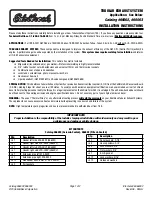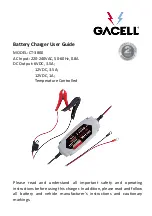
Check electrolyte level in each cell
approxim ately every fo u r weeks, and
more frequently during the summ er
and in hot climates.
Refill battery with distilled or tap
water. Do not use metal funnels or
push through the overfill-protection
diaphragms in the fille r holes.
The battery is com pletely filled when
the water stops draining through the
overfill-protection diaphragm.
To check the battery charge with a
hydrom eter, push its tip through the
o verfill-protection diaphragm and
take the electrolyte sample.
Battery
Coat battery term inal clamps with
a cidproof grease. Keep battery clean
and dry.
The service life of the battery is also
dependent on its condition of charge.
It m ust always be sufficiently charged
fo r the battery to last an optim um
length of time.
Therefore, we recom m end that you
have the battery charge checked fre
quently if you use the vehicle m ostly
fo r short distance trips, or if it is not
used fo r long periods of time.
Only charge a battery with a battery
charger after it has been discon
nected from the vehicle electrical cir
cuit.
Battery fluid contains sulfuric acid.
Do not allow this fluid to come in
contact with eyes, skin or clothing.
In case it does, immediately flush
affected area with water and seek
medical help.
A battery will also produce hydrogen
gas, which is flammable and explo
sive. Keep flames or sparks away
from battery, i.e. improper connec
tion of jumper cables, cigarette
smoking, etc..
While the engine is running the bat
tery terminal clamps must not be
loosened or detached as otherwise
the alternator and other electronic
units would be damaged.
Only tow vehicle with the battery
connected.
Warning!
















































